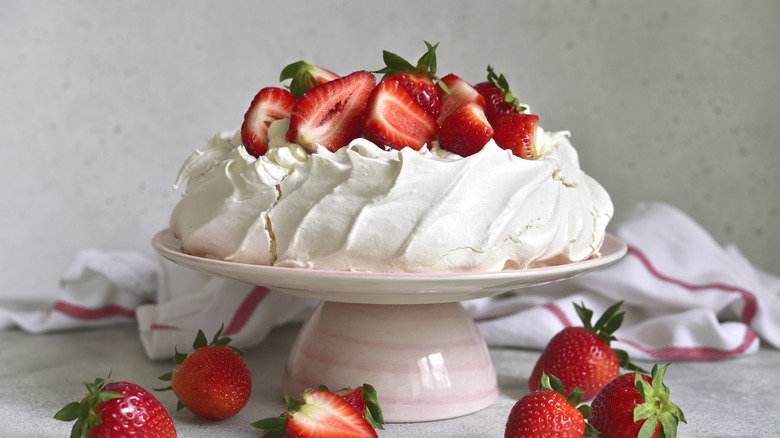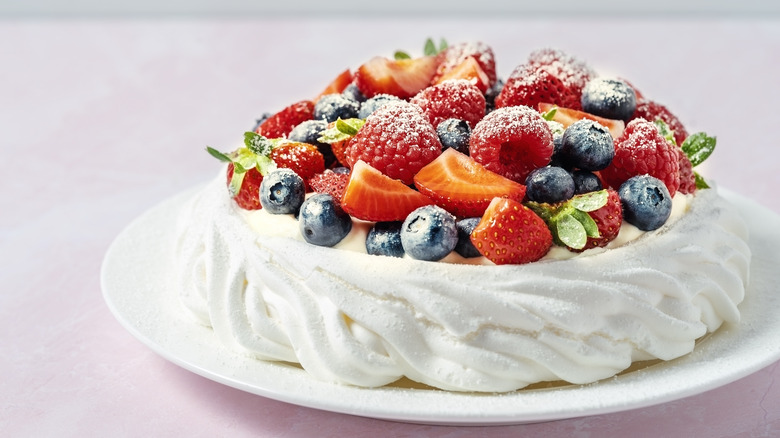The Ingredient That Makes Or Breaks The Texture Of Pavlova
Pavlova is a showstopper of a dessert — a delicate, cloud-like shell piled high with fluffy whipped cream and a vibrant explosion of colorful fruit. The base is a type of meringue with a crisp exterior and a soft, marshmallowy interior, a contrast that sets it apart from regular meringue, which is entirely crisp. Sofia Schlieben, corporate pastry chef at JF Restaurants, explained to Food Republic that sugar is the key to achieving this texture.
The round, white shell is made by beating sugar with egg whites, which puff up as they incorporate air. While some baking recipes allow for experimentation with ingredient ratios, this isn't the time to improvise. Schlieben emphasized, "Ratios in meringue recipes are crucial ... DO NOT cut sugar amounts in recipes you have never tried!" The sugar is added slowly to the egg whites as they whip — one spoonful at a time, pausing to mix before adding more. If the sugar were added all at once, it could overwhelm the eggs and take longer to dissolve.
Using alternative sugars and sweeteners to make pavlova is possible, but Schlieben warned that it will be more challenging and "noticeably affect the texture, flavor, and stability." She called granulated sugar "by far the best option" because it dissolves easily in the egg whites, making the meringue smooth and glossy. Superfine sugar speeds up this process even more.
The effect of other sugars on pavlova
It isn't just sugar that's important to pavlova's structure. Cream of tartar is whipped with the egg whites to stabilize them so the shell doesn't collapse, though lemon juice or vinegar also work. Many recipes call for mixing in cornstarch and sometimes vinegar after the whites have reached stiff peaks, which helps create the contrast between the crisp and soft textures. The whipped whites are shaped into a swirly circle with a wide, concave center and baked at a low temperature.
If you'd like to experiment with the flavor of other sugars, brown sugar is the most common choice, providing a caramel taste and light tan color. It has more moisture than granulated sugar — which is why it makes the chewiest cookies — which causes the shell to be chewier with a more fragile exterior. You can reduce the texture issues while still getting extra flavor by using a mix of brown and granulated sugars. You could also try demerara or turbinado, both brown sugars with large grains. Pulse them in a food processor to make them finer, which you could also do with any sugar except superfine.
Maple syrup or honey would be more of a departure since you're introducing a liquid, and moisture affects texture. Here again, it might be best to use a smaller amount for flavor along with granulated sugar, pouring it in slowly as the egg whites are beating. Alternatively, you could use maple sugar instead of syrup.


